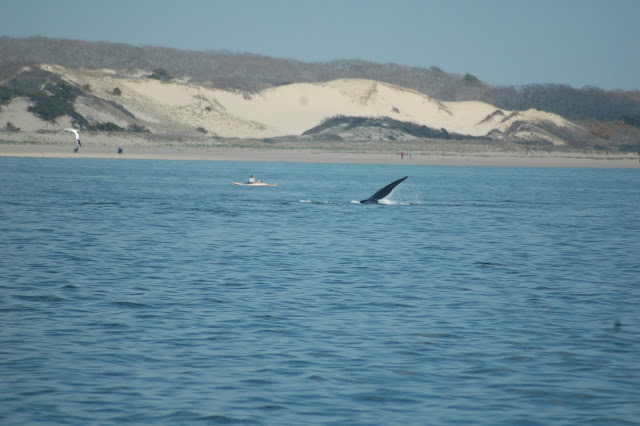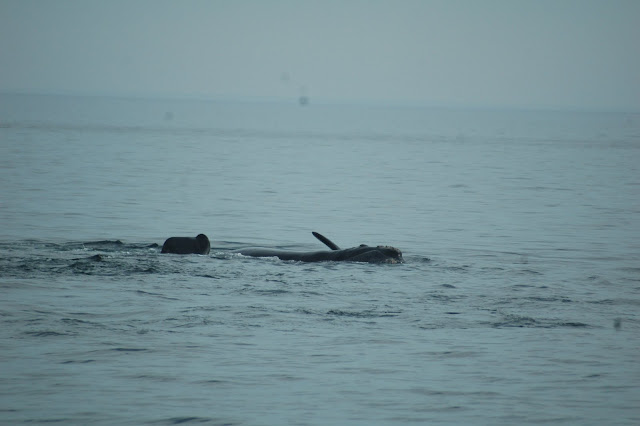What a GREAT day we had. The whole family together, we traveled down the Cape to Provincetown, one of our favorite places. Filled with art studios, great shops, restaurants, interesting homes and an eclectic mix of people.
We started with lunch at Napi's for lunch. Then walked to the pier to board one of the whale watching boats from the Dolphin Fleet. They are a research vessel so you get a naturalist on board each cruise. They will find the whales, as well as other interesting ocean life, all the while teaching you about them. They are doing their own documentation, photographing and research at the same time.
As we pulled away from the dock the cormorants were fishing.
A harbour seal popped up to see what was passing by.
The Cape is a shelf. Only 20-30 yards off the beach, here in Ptown, it drops off to 100-150 feet. You can see how close the whales are to the beach. The first thing you see, as you approach, is the water spout.
Because of the orientation of the Right Whales blow holes their spray comes out in a V shape.
A massive head popping up.
A kayaker getting a close look. Oh, to be there!
The giant tail, up to 28' across, coming out of the water, preparing to dive.
We were lucky to have a beautiful sunny, calm day on the water.
Sam and Zach
A research plane photographing and documenting the individual whales. There are only 473 Right Whales left in the world. This winter/spring 211 of them have been here in Cape Cod Bay. Today the plane sees something else. A whale is entangled.
A boat is dispatched to rescue the whale. They successfully disentangled a whale just 2 days ago. All fishing equipment, traps and nets must be removed in any area the Right whales are located. Still they can get caught up in ropes and nets that have floated free, blown away or in an area a whale has passed through that has not been cleared yet.
The Right Whale grows up to 60' long. Although they are one of the largest mammals on earth they eat some of the smallest organisms. Right whales are baleen whales, they filter their food through their long baleen plates. Right whales open their great mouths and graze along the surface of the water. Right whales mostly eat small crustaceans including copepods and small shrimp-like animals called euphausiids. The white in the photo above is the baleen.
More baleen can be seen as this whale brings it's head out of the water.
A mighty tail.
This view shows the 2 blow holes on top of the head.
As we were about to pull back into the harbour these two whales were fertilising in front of us. The next series of photos shows them engaged in an unknown activity. They are rolling around together and it looks as if they are rubbing each other with their fins. It is not mating as the timing would not be correct for the baby to be born. Whales have a 12 month gestation period and babies are not born this time of year.
Scientist have been performing research on the retina's of whales (many different species) that have been found dead. They can live over 200 years. They have even found ancient spear heads embedded in the whales. Imagine that, being speared over 150 years ago, surviving and carrying that ancient spear tip around in your body all that time!
We had a great time!
We cherish the moments we can ALL be together.
Memories we can carry until the next time.
Memories that are especially important for Scout who will no longer get to be with Zach everyday.
After the cruise we got ice cream, walked in some art studios and shops and played on the beach.
As the sun began to set on Provincetown...
...we headed home.
All tuckered out.
Life is Good!





























No comments:
Post a Comment